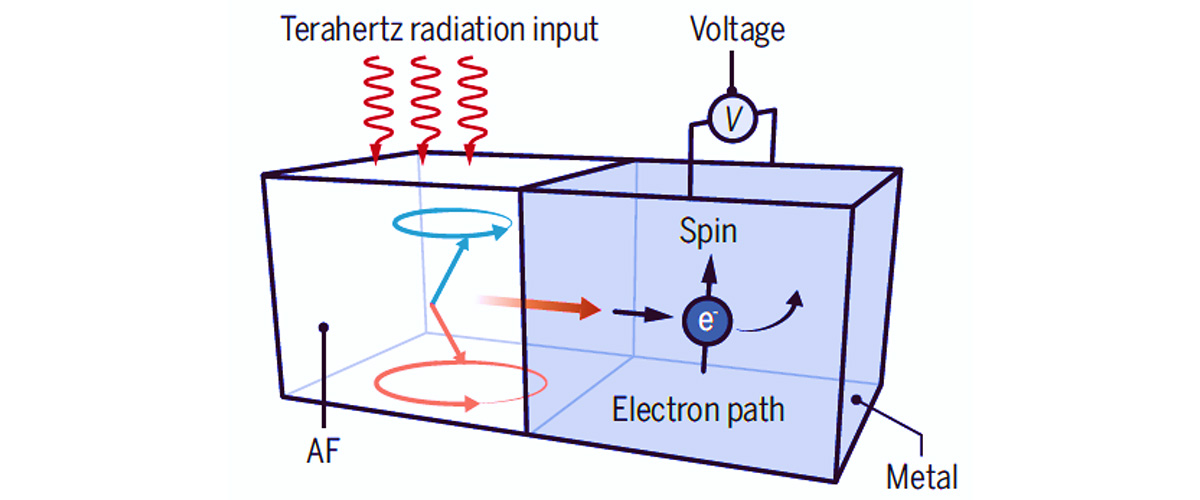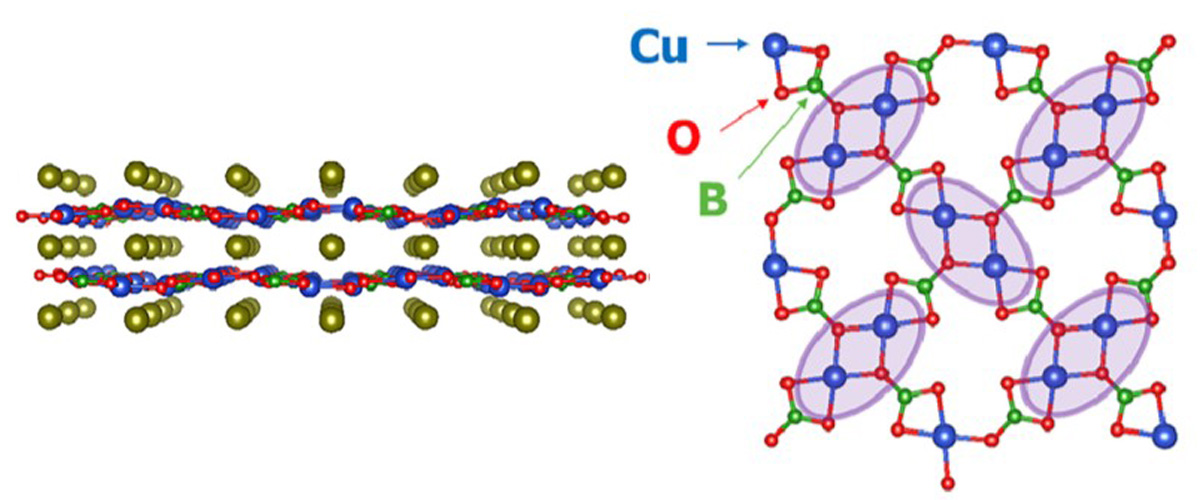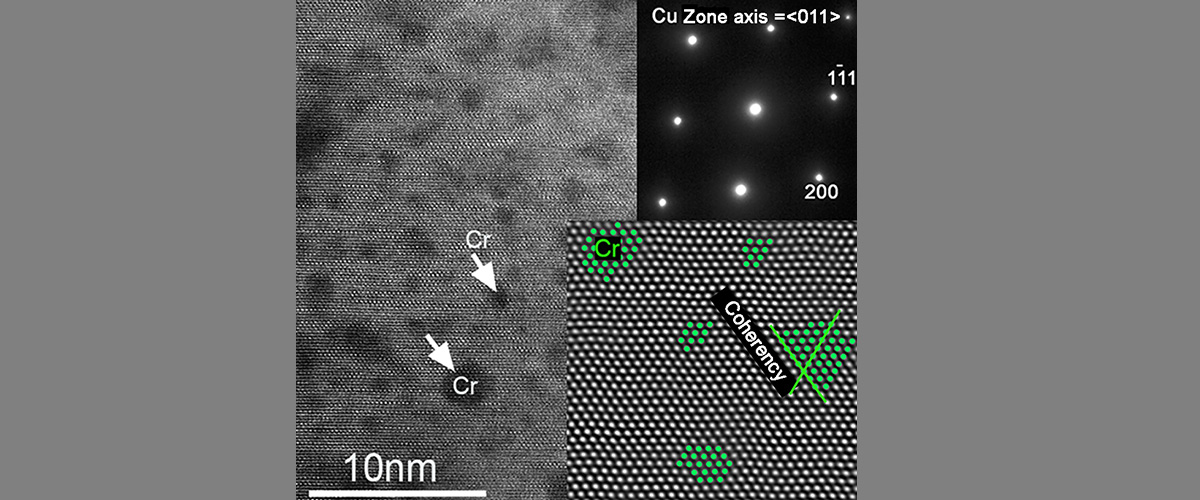What did scientists discover?
This work reports the first observation of terahertz radiation that pumps spin-polarized electrical current from an antiferromagnetic material into an adjacent non-magnetic metal, followed by its subsequent conversion into ultra-fast electrical signals.
Why is this important?
The generation of spin currents in antiferromagnets occurs at terahertz frequencies, at least two orders of magnitude higher than ferromagnet-based devices, opening the way to ultrafast control of magnetic states in future spintronics applications. Although this work employed high magnetic fields, it could enable the development of tunable terahertz processors operating at very low fields, paving the way towards energy-efficient nanoscale technologies critical for applications in a wide range of areas, from data storage and communications to medical imaging.
Who did the research?
P. Vaidya1, S. A. Morley2, J. van Tol3, Y. Liu4, R. Cheng5, A. Brataas6, D. Lederman2, E. del Barco1
1Univ. Central Florida; 2Univ. California-Santa Cruz; 3National MagLab; 4Northeastern Univ. China; 5Univ. California-Riverside; 6Norwegian Univ. of Science and Technology
Why did they need the MagLab?
The magnetic dynamics in antiferromagnetic materials are dominated by the so-called exchange interaction which causes the up/down ordering of electron spins. This relatively strong interaction results in dynamics that are much faster than those in currently employed ferromagnetic devices. Consequently, the unique spectrometers in the EMR facility at the NHMFL were essential for accessing the terahertz regime, while complete tuning of the dynamics required high magnetic fields.
Details for scientists
- View or download the expert-level Science Highlight, Spin-Charge Interconversion at Near-Terahertz Frequencies
- Read the full-length publication, Subterahertz spin pumping from an insulating antiferromagnet, in Science
Funding
This research was funded by the following grants: G.S. Boebinger (NSF DMR-1157490, NSF DMR-1644779); E. del Barco et al. (AFOSR-FA9550-19-1-0307)
For more information, contact Stephen Hill.






